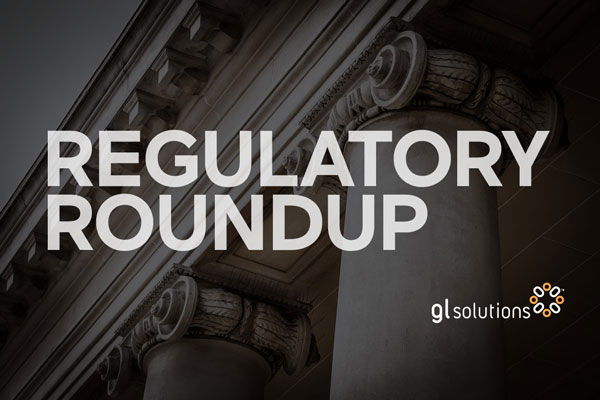Modern licensing tools support your regulatory agency, improving the efficiency and effectiveness of state and local government. In turn, local economies receive a boost—better tackling workforce shortages and serving constituents. While modern licensing tools bring many improvements to a state’s government and economy, we focus on three—improved workforce, 24/7 service and efficient communication.
Improved Workforce
Workforce challenges plague state government. The National Association of State Chief Information Officers (NASCIO) released the results of their 2022 State CIO Survey; the survey includes responses from 51 state and territory CIOs. “Ensuring that states have the current and future IT workforce necessary continues to be a major pain point for state CIOs,” said NASCIO Executive Director Doug Robinson in an October 10 press release. “It’s clear that CIOs are thinking about how they will retain the staff needed to meet the demands for digital services today and in the future.”
Kym Ayscough, a board member for the Council on Licensure, Enforcement and Regulation, highlighted workforce shortages as a crucial issue for regulators in an interview on CLEAR’s podcast, CLEAR’s 2022-2024 Strategic Plan – Supporting the Regulator of Tomorrow on October 11, 2022. The “area of workforce shortage in the regulated professions is perhaps the biggest challenge emerging for regulators,” she said.
Modern state license tools help your regulatory agency tackle these workforce issues, enabling you to easily scale up your efficiency, monitor staff performance and improve training.
Tools to help you tackle workforce challenges:
Workflow Guides
Replace your paper training manuals with digital step-by-step guides that take new and existing staff through all of your agency’s business processes. These guides help new staff hit the ground running, helping them to easily and accurately complete business processes. And veteran staff stay consistent and efficient with the structure and steps provided by business process guides.
A digital business process guide, built into your licensing system, helps guide users through each step of a process. The guides clearly indicate when staff need to manually perform an action, and even when an action happens automatically. These digital business process guides take your staff through each requirement when they process a general business license application, for example. If your staff leave the process, these process guides highlight where your staff left off.
Digital training guides help your staff with features like these:
- Guides your staff step by step through your agency’s business processes
- Takes your staff to where the work needs to occur—just by clicking on a step in the digital process guide
- Keeps your current place in the workflow highlighted, so no getting lost or missing a step
- Helps your staff through each process—without leaving your agency’s regulatory system
- Includes detailed process navigation, pinpointing where input is manual, automated or scheduled
- Prompts users to restore previously open tabs on login to retain progress
- Navigates users back to where a user left off and highlights the current step
Workflow Dashboards
Workflow dashboards help your agency work efficiently; staff know their tasks and know what to prioritize. With dashboards integrated into your regulatory system, staff track their work and meet deadlines.
For your managers, dashboards enable them to easily assign work to an employee—and monitor staff progress. Workflow dashboards allow managers and staff to manage the work in their own queues. From one central dashboard a staff member sees the deadlines for various pieces of work. Managers monitor all items sent to them for approval and even generate a comprehensive view of the records assigned to each staff member.
Using a role-based security system with these dashboards ensures that staff members view, edit and delete system data only as allowed by their authorized security permissions.
Staff workflow dashboards help your staff with features like these:
- Alerts logged-in staff about deadlines for assigned tasks
- Features color coding to inform users about their status
- Enables users to create batches for printing and emailing based on date range and license status, as well as other parameters
- Allows assignments based on users, position types and security groups
- Hyperlinks records, individuals, tasks and cases listed in a dashboard directly to associated records
- Displays all work currently in a staff member’s name, complete with click-through links to directly access tasks
- Users can configure business rules to automatically assign a task to the next person in line when status is update
24/7 Service
Modern licensing tools help your office move away from using paper to going online. In turn, you serve your constituents more efficiently and tackle backlogs. Suanne Parnell, IT Manager for the Alabama Home Builders Licensure Board, knows firsthand the transformative difference of moving from a paper to a digital licensing system. “In these times of virtual offices,” says Parnell, “having a web-based program facilitates communication between office staff and investigators working in the field.”
Tools and changes to help you digitize your agency’s services and help you to better serve your constituents:
Self-service websites
Self-service websites enable licensees to submit their documents electronically. Managing your documents digitally enables your staff to capture, process and share documents of any type electronically, including text documents, PDFs, audio and video files. Handle business license applications, as well as supporting materials, such as fingerprint cards—24/7.
Digital Office
The COVID pandemic changed the way regulatory agencies work. More than ever before, licensing agencies need the ability for their staff to work from home. To help staff work remotely—and serve the public—regulatory agencies must wean themselves from paper documents. It’s not easy for licensing specialists working from home to process applications and renewals that are snail mailed to your agency’s office.
And besides supporting remote work, moving away from paper and towards a digital government improves the efficiency of your office, helping you manage licensing backlogs—caused by outdated paper licensing systems.
Automatic uploads
Automatically link uploaded documents to associated records, making them instantly accessible to authorized staff. When uploaded documents fulfill licensing requirements, some systems automatically update the related status to “complete.” The application records when the system received and uploaded a document—and by whom.
Auto-fill templates
Custom templates allow your staff to send notices, business licenses and other material to single recipients and to groups. Use a system that populates templates automatically with names, addresses and other data. Attach outgoing and incoming email messages automatically, along with attachments automatically to associated records in the system, simplifying research and retrieval.
Efficient Communications
Using modern licensing tools helps to improve your regulatory agency’s communication—both externally with the public and internally with staff. Harness automated ways to communicate with constituents, as well as with your agency’s staff to fuel continuous improvement.
Tools that support efficient communications:
Communication automation
Support information flowing in and out of your agency with communication automation; for example, automate routine emails to licensees, such as licensing renewal reminders. An email management system enables your staff to send and store both individual emails and batch emails; choose to send out automatic renewal emails, for example, and then attach each email to the associated record.
Email management helps your agency manage incoming and outgoing emails related to records in your regulatory system—including all related attachments.
Email and communication management systems support your regulatory agency with features like these:
- Use custom templates to address and merge content into forms and email.
- Use Microsoft Outlook, Gmail or other desktop email software to send and receive messages.
- Format and customize individual emails.
- Send batches of emails.
- Include automatic attachments, like forms, with the email.
Performance measures
Focus on your agency’s key performance indicators—or measures of success—and communicate these to your team to continually improve. Your agency takes the time to review these measures on a regular basis, in turn, better serving your constituents. Use a KPI tracker to look at measures that relate to business activity and staff workloads; by gathering data stored within your regulatory system, your agency measures organizational, team and individual performance information.
Tracking performance metrics helps your agency with these key features:
- Distribute KPI reports as you like, via email or online.
- Define KPIs with minimum, maximum, as well as target values.
- Specify weight values for KPIs to easily understand the importance of one KPI over another.
- Define objectives by date.
- Define the frequency of KPIs, such as weekly or monthly, along with end dates.
Online services
Your agency offers the public online self-service; for example, business owners submit their applications, permits, new business licenses and background checks online.
In Key Components of a Professional Licensing System we find that “websites that allow applicants and licensees to enter information themselves are the most significant labor-saving improvement your agency can make. They virtually eliminate staff data entry and cut down significantly on the number of calls agencies receive from licensees and the public. They also can allow licensees to update addresses and other information rather than asking your staff to do it.”
Self-service websites typically address the following processes:
- Renewals
- New Applications
- Complaints
- New Business License Verification
Workflow guides
You standardize your business permit office’s processes and create user guides for your staff to follow. These instructional guides help your staff to execute your agency’s existing business processes step by step.
Use modern licensing tools to increase the effectiveness and efficiency of your regulatory agency. In turn, you improve your agency, along with the broader community you serve.
Time to Modernize
GL Solutions helps your regulatory agency run, grow and adapt through modern software and automation that helps solve your agency’s greatest challenges. To learn more, contact us.
To receive the latest regulatory news delivered to your inbox each week, subscribe to our newsletter.


